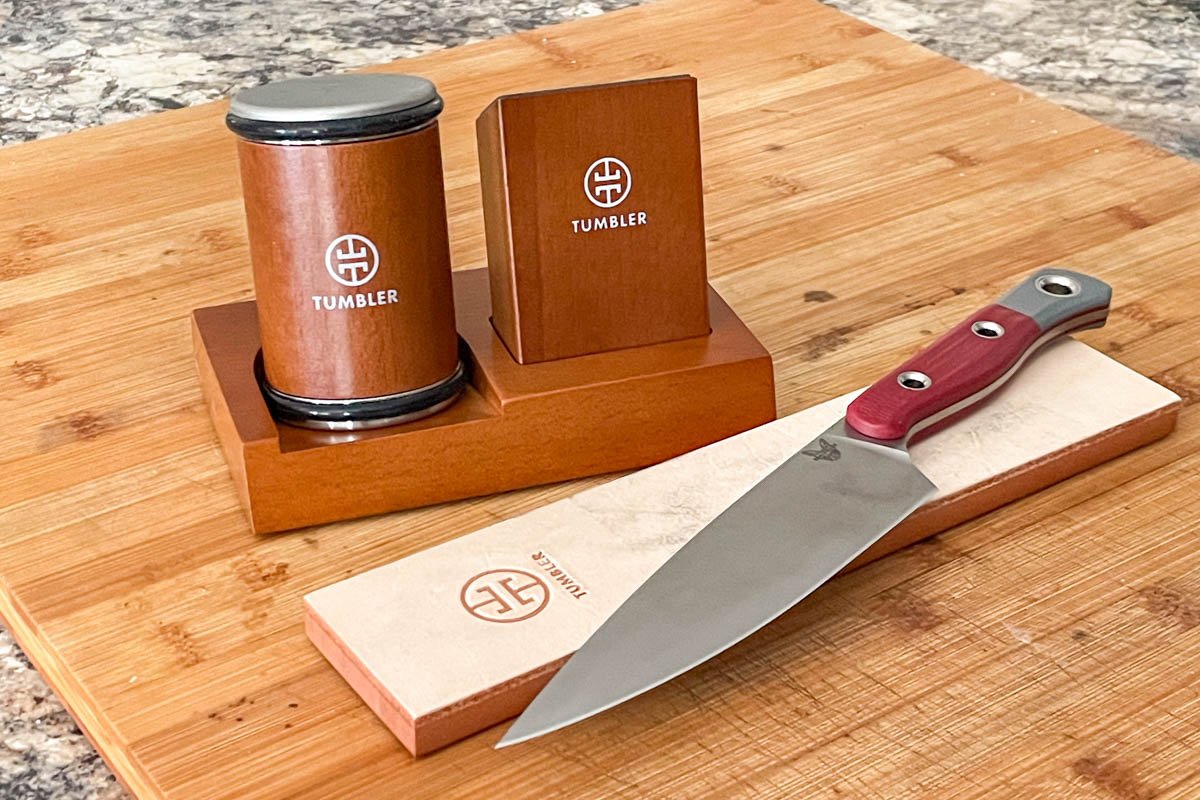I’ve been seeing ads on Facebook for the Tumbler rolling knife sharpener and the design intrigued me. The video made it look easy, but is it too good to be true? I was able to get my hands on one along with a whole pile of knives I’ve been waiting to sharpen. I’m going to share what I learned from using it on my own knife collection and help you decide whether to pull the trigger.
Pros
- Easy to use for all skill levels
- Produces excellent results
- Quality build
- Diamond sharpening stone never needs replacing
Cons
- Slower sharpening process than other methods
- Magnetic block won’t hold ceramic and other non-ferrous knives
Tumbler Rolling Knife Sharpener Basics
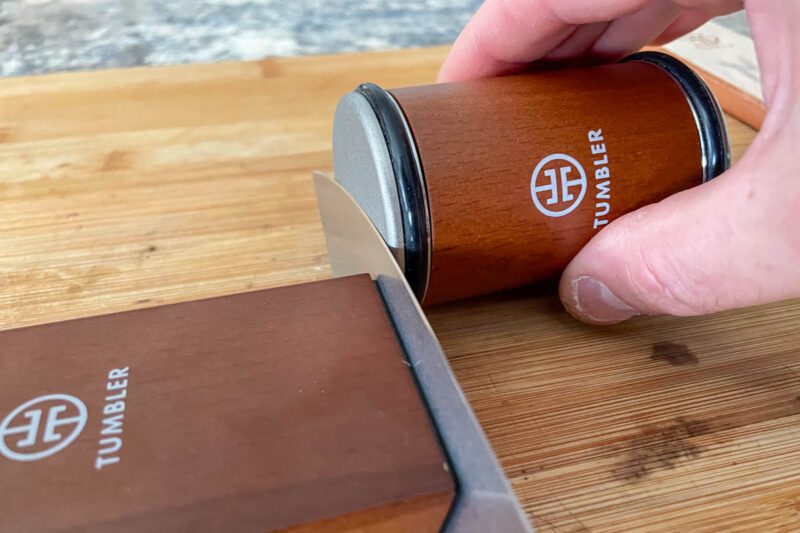
The basic concept of the Tumbler is both simple and brilliant. A magnetic block holds your knife at either 20° or 15° while you roll the sharpener along the blade edge. It almost seems too easy.
One key difference between this and other knife sharpeners I use is that you only have a fine sharpening stone and no coarse stone. Most sharpening systems have both to quickly get the blade back into a proper shape and then create more precise edges followed by honing to finish them off.
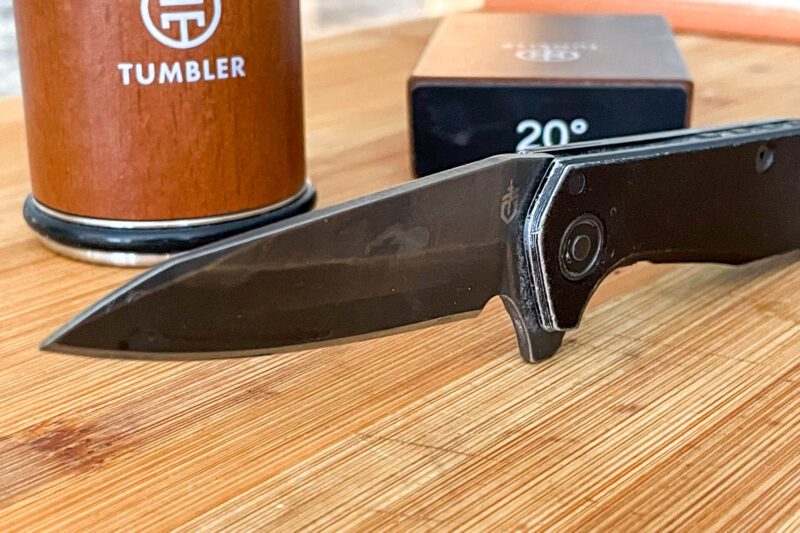
With the Tumbler’s single fine diamond stone, the sharpening process takes longer, especially for neglected and abused blades. The quality of the steel makes a difference, too. Something like 420HC sharpens more easily than my knives with S35VN or other super steels. An initial sharpening can easily take 5 – 10 minutes depending on how damaged the edge is and what steel blend the blade is.
The good news is that subsequent sharpening only takes a couple of minutes if you stay on top of it.
If you look down the edge of a knife blade, you’ll notice it isn’t a perfectly straight line—it slightly curves inward the closer you get to the tip. Even though the two sides of the roller sharpener don’t spin independently, it is able to turn and follow the curve of the blade easily.
One thing I love about the design concept of the Tumbler sharpener is that the movement across the blade is relatively slow. That keeps the heat build-up to a minimum, eliminating the risk of chipping, deformation, and steel mutation that can come from high-speed abrasive sharpening systems, such as bench grinders.
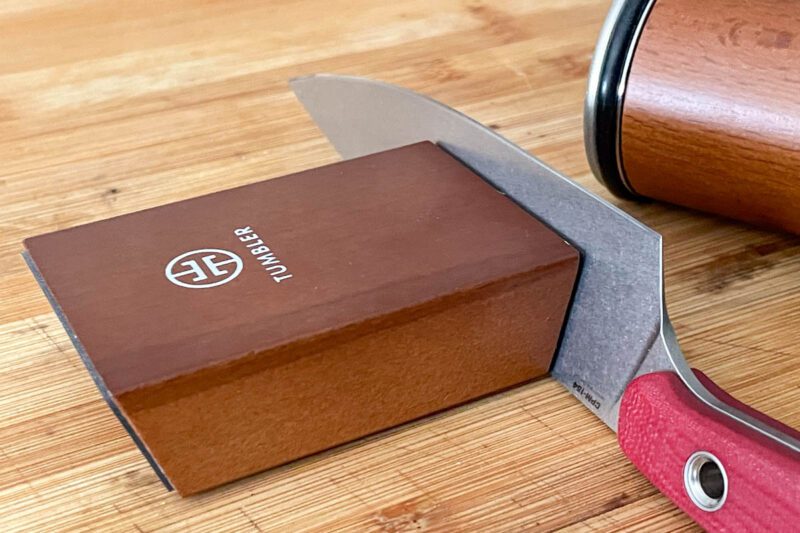
The biggest potential pitfall of the design is if the block fails to hold the knife steady, but that’s not an issue in my experience. The magnets are strong, and I haven’t had an issue with any of my knives shifting, even my smallest pocketknives.
Using the Tumbler Rolling Knife Sharpener
Standard Knife Sharpening
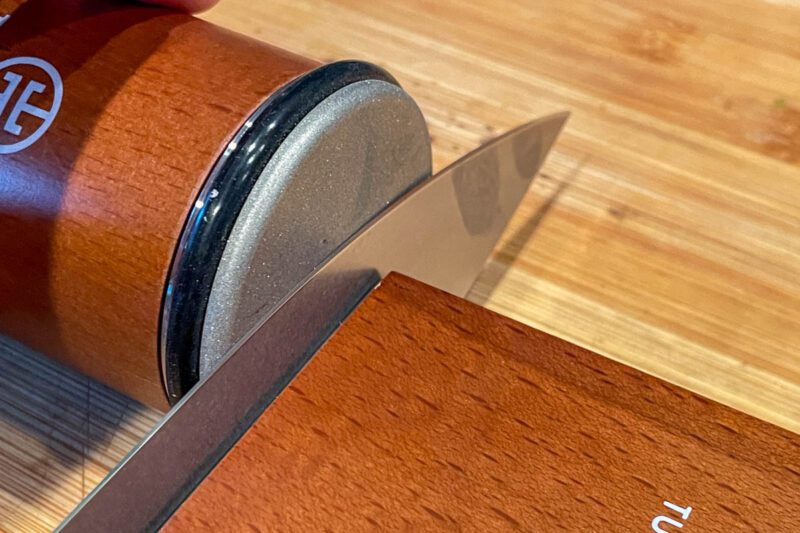
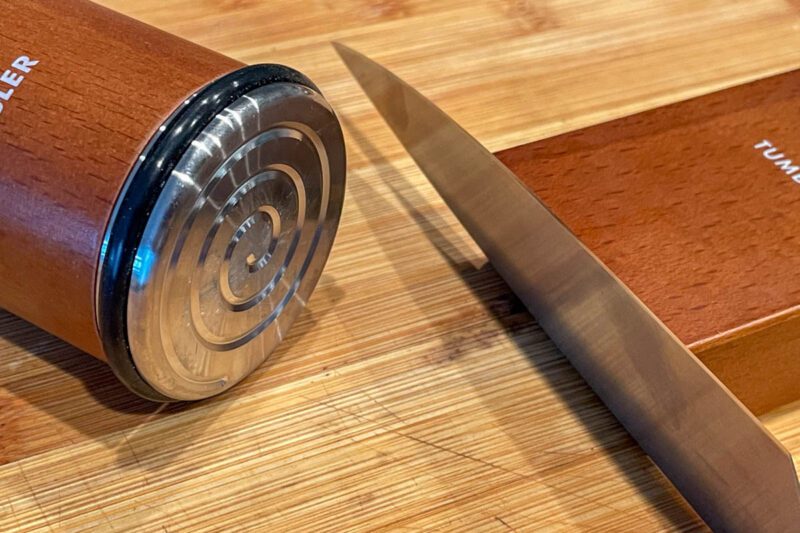
With most kitchen knives, hunting knives, and larger outdoor knives, the sharpening process is straightforward. The important thing to remember is that you need a flat surface to work on.
- With the knife back flush to the table or countertop, bring the blade to meet the holding block
- Hold the block steady with one hand
- Run the sharpening roller back and forth against the edge of blade until you get the edge quality you want
- Flip the roller around and run the honing side back and forth several times
- Finish the edge by pulling it across a strop (optional, but recommended)
Here are some tips to make sure you get the best results:
- Use gentle pressure against the blade with the sharpener. It only needs contact, and too much pressure can move the blade off angle.
- Make sure you pull the edge back across the strop. Pushing it can cause the edge to dig into the leather and damage it.
- Ceramic and other non-ferrous blade materials won’t stick to the magnet, so they’re not a good fit for this sharpening system.
Sharpening Small Pocketknives
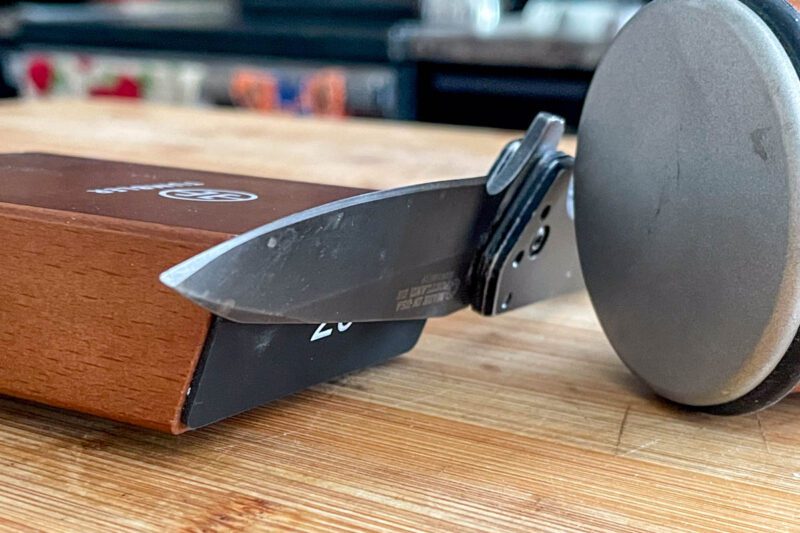
Several of my EDC pocketknives have short drop point blades, and keeping the knife flush against the table surface doesn’t let the sharpener contact the edge. If you run into that, it’s no big deal. Simply set the knife higher so that the entire blade edge is above the top of the block. Even if the blade isn’t perfectly straight, the circular design of the sharpener still provides proper contact.
One thing I ran into frequently on my smaller knives was a double-grind blade design like I have on my Gerber Fastball. With it, notice that the side of the blade doesn’t sit completely flush against the block’s side. That’s okay. I was still able to get the edge I was looking for. Just be aware of how much pressure you apply. Too much, and you can push the top part of the blade into the block, changing the sharpening angle. It also makes for inconsistency in your sharpening and poor-quality results.
Sharpening Oversize Knives
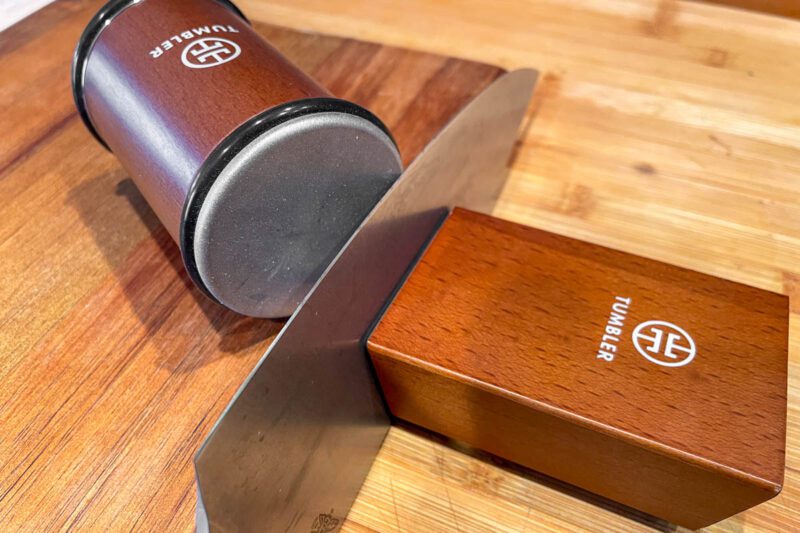
Oversize knives, such as cleavers, have the opposite problem of small knives: the edge can be taller than the sharpening roller can reach. The fix here is easy enough. Grab a cutting board or similar surface to put the roller on a higher level than the holding block. If it’s long enough for the roller to run the entire length of the blade, you’re good to go.
Sharpening Serrated Blades and Scissors
Where the Tumbler reaches its limit is on serrated blades and scissors. It’s not made for them. Worse, if you try to sharpen a serrated edge, you can damage the sharpening stone and honing surface.
It is possible to sharpen the plain section of a partially serrated blade. However, you might still get those serrations on the roller’s surfaces, so I recommend not taking the risk and leaving those knives to other sharpening systems.
Tumbler Rolling Knife Sharpener Price
There are several configurations if you’re looking to get your hands on this sharpener. My recommendation is the Starter Set that includes the rolling sharpener, holding block, storage block, and strop. Its regular price is $207 and it’s worth keeping your eyes open for sales.
Here’s a full list of options:
- Starter Set: $207
- Ultimate Set (Starter Set plus a chef’s knife): $256
- Sharpener Set (does not include the strop or storage block): $129
- Strop: $39
- Holder Pro (10°, 12°, 17°, and 25° holding angles): $39
The Bottom Line
The Tumbler rolling knife sharpener offers precision hand sharpening without having to manually maintain your blade’s angle against the sharpening stone. For me, that combined with a high level of control over the sharpening technique outweighs that it’s a slower process than other knife sharpeners I use. Better yet, the fact that it’s so easy to use makes the Tumbler appropriate for all skill levels while producing a finish quality that even high-end knife enthusiasts can appreciate.

